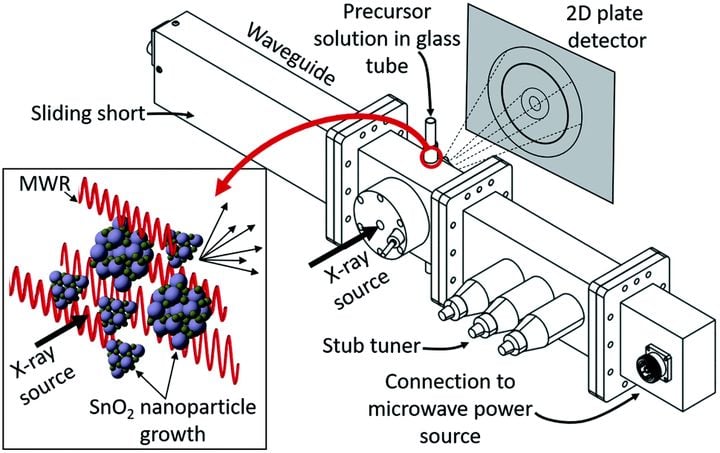
New research has uncovered a potential method for 3D printing ceramic materials using microwaves.
Currently 3D printed ceramics are a rarity in the industry. There are few commercial vendors offering ceramic capabilities, and those are typically “cold prints” followed by a heating cycle to bond the material together. However this method poses an issue in that the microstructure of the ceramic object isn’t truly controllable. This can lead to less strong parts.
Now researchers have developed a method of using microwaves to influence the growth of ceramic oxide materials at low temperatures, and have proven this approach can be effective.
While the notion of using 2.45 GHz microwave radiation to induce crystallization has been known previously, it was not known how this occurred, nor whether the resulting ceramic had improved properties.
The researchers in this experiment used X-ray pair distribution function analysis to examine exactly what was happening at the micro-scale during microwave irradiation. Their observations concluded that the electromagnetic field caused changes in the atomic oxygen placement, specifically increasing disorder. It turns out that this disorder greatly assists the normal nanoparticle crystallization process, and thus they proved the microwave field had a strong influence on ceramic creation.
Ceramic 3D Printing With Microwaves
While this research is not 3D printing per se, it does suggest the possibility of using this effect within a future 3D printer.
One can imagine a hypothetical device that would perhaps selectively place ceramic powder along with non-responsive powder, layer by layer. You’d end up with a chamber filled with powder, but embedded within would be a loose geometry of the target ceramic powder in the shape of the desired object.
Then, a second step could be applied where the powder chamber is irradiated with microwaves for a sufficient duration and strength to allow for crystallization to occur. It’s not clear how long this step would take, as that would require some additional investigation.
Finally, when crystallization completes, the chamber could be emptied. The neutral powder would pour out, and the solidified ceramic object would be easily removed. It would have to be “dusted off” to remove stray powder, but should exhibit the desired desired geometry.
A benefit to this approach would be the turnaround time could be faster than approaches using heating. Some 3D printing systems require long periods to cool down before proceeding, sometimes over a day. The microwave process should be a lot cooler and it may even be possible that the print could be used directly immediately after the microwaving step completes.
But this is all entirely wild speculation. All we have at this point is the observation of an energy-chemical effect. That will have to be built into an experimental rig that can test this imaginary 3D printing process. Even if it worked, there would be considerable effort required to tune it to provide efficient and quality prints.
That’s not for me to do. But perhaps someone out there will be sufficiently interested to give this a try?
Via RSC

